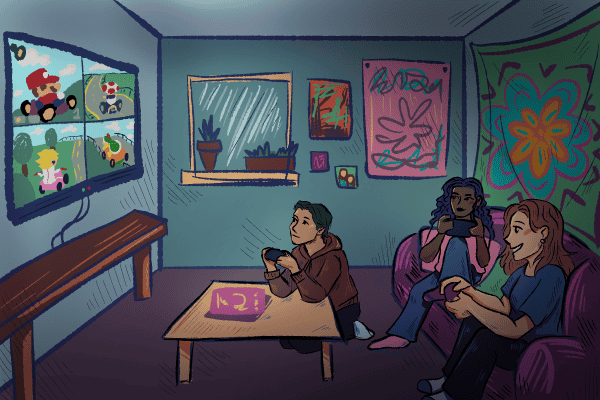Get tested: Sexual health doesn’t have to be scary
March 2, 2022
The CDC reports that 1 in 5 people in the U.S. have a sexually transmitted infection. Additionally, according to a 2022 report by Innerbody Research, Tuscaloosa is No. 57 on a list of cities in the U.S. with the highest STI rates.
While many illnesses are openly discussed, sexually transmitted infections remain a stigmatized topic, despite their prevalence among college students.
According to Hartford Healthcare in 2021, 1 in 4 college students have a sexually transmitted disease.
However, due to laws protecting student privacy, exact statistics for The University of Alabama are seldom published.
The Alabama Department of Health reports that Tuscaloosa County has a significantly higher rate of chlamydia, gonorrhea and all stages of syphilis.
“I know [the UA STI rate] is high, but I can’t give an exact number,” said Megan Williams, a doctoral student studying health education.
Considering that this issue is highly prevalent, it’s as important to make students aware of how it’s being combated and the resources that are available in Tuscaloosa.
In the state of Alabama, sex education is not required to be taught in public schools, and the schools that do teach it are required to emphasize abstinence.
Last year, the Alabama Legislature passed HB 385 to revise the focus of sex ed content, indicating that this issue has the attention of government officials. However, this bill mostly clarified and changed terminology, continuing the state’s emphasis on delaying sexual activity and declaring premarital sex to be abnormal.
In order to combat the effects of such minimal education and provide a safe atmosphere in which students can discuss sexuality freely, The University of Alabama offers courses such as the Sexuality and Society class in the New College.
Alongside teaching this class, Williams conducts her own research on STI rates and sexual health within the 18-to-24 age range.
“Even though it’s the Bible Belt, people want to talk about it, they just don’t know how to. And, so, having that safe space allows them to use their curiosity and get a lot of questions answered that maybe they wouldn’t have otherwise,” Williams said.
Discussion and education allow for students to learn about preventive measures and how to effectively communicate with sexual partners, thus lowering the STI rate.
Charlotte Petonic, the assistant director of Health Promotion and Wellness, said she recognizes that sex education experiences differ greatly among new students.
“When students come here to Alabama, their sexual health education varies so greatly across the country,” Petonic said.
Even in a single state, a student’s school district or county can determine the type of sex ed they receive. Some programs teach that condom usage is ineffective, which can discourage students from using them.
As a result, campus organizations like Project Health are attempting to give every student a baseline understanding of this topic in order to even out the level of knowledge on campus.
“When I think of college towns in general, we have a lot of access for our students. We have the health center here, there’s several great nonprofits, and then there is the health department that’s really great,” Petonic said.
Those nonprofits and organizations include University Medical Center, Whatley Health Services and Five Horizons Health Services. The latter provides preventative education as well as STI care.
There’s also a level of personal responsibility in the lowering of STI rates that includes communication and preventive measures.
“I think the first thing is that students who are choosing to be sexually active need to know how to properly protect themselves,” Petonic said. That means using a protective barrier during sex. Protective barriers are available through the University’s distribution program on campus.
In the end, the department’s goals include testing, medical care and better education for students.
“We have services here where we’ll do education and outreach for classrooms, organizations and anything like that,” Petonic said.
This story was published in the Health Edition. View the complete issue here.
Questions? Email the culture desk at [email protected].











